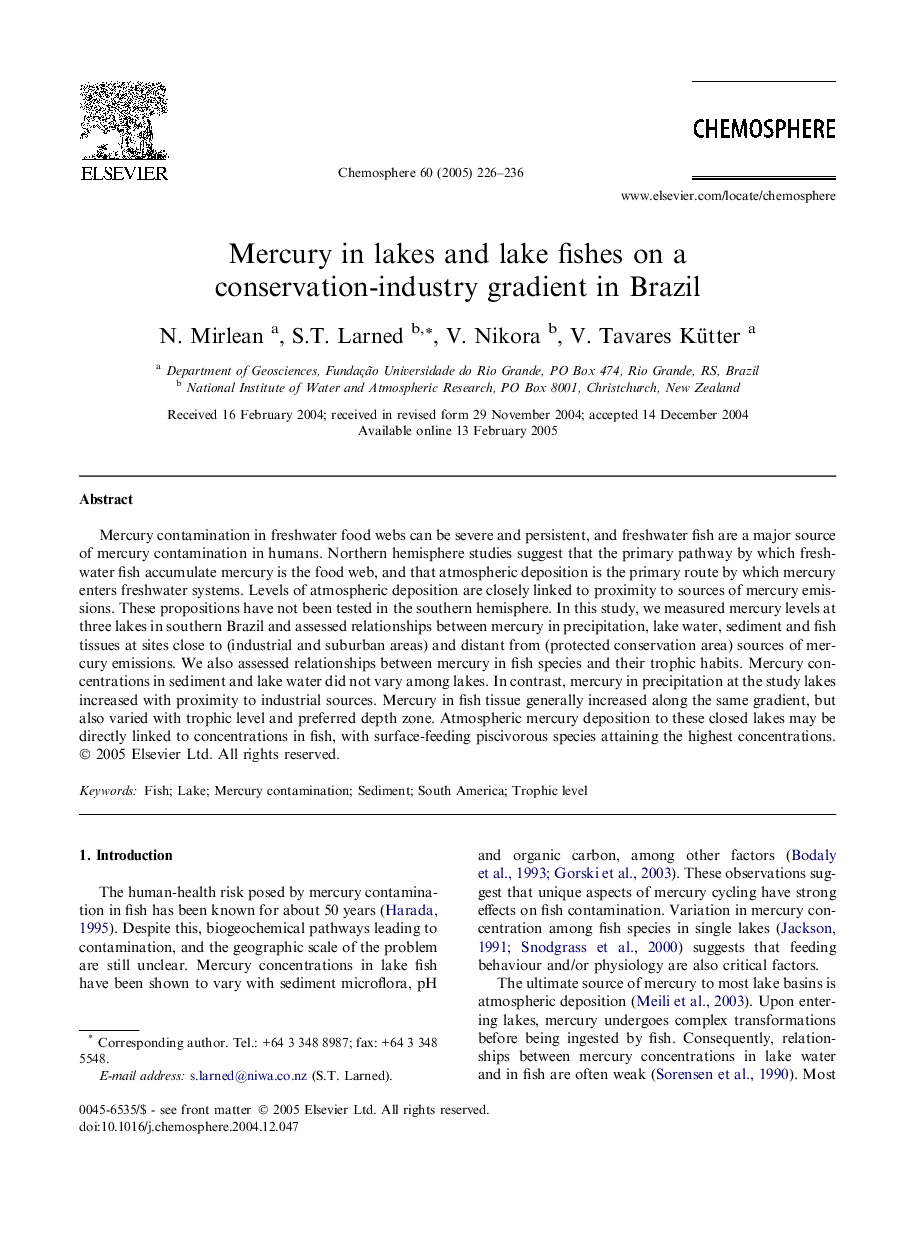| Article ID | Journal | Published Year | Pages | File Type |
|---|---|---|---|---|
| 9451791 | Chemosphere | 2005 | 11 Pages |
Abstract
Mercury contamination in freshwater food webs can be severe and persistent, and freshwater fish are a major source of mercury contamination in humans. Northern hemisphere studies suggest that the primary pathway by which freshwater fish accumulate mercury is the food web, and that atmospheric deposition is the primary route by which mercury enters freshwater systems. Levels of atmospheric deposition are closely linked to proximity to sources of mercury emissions. These propositions have not been tested in the southern hemisphere. In this study, we measured mercury levels at three lakes in southern Brazil and assessed relationships between mercury in precipitation, lake water, sediment and fish tissues at sites close to (industrial and suburban areas) and distant from (protected conservation area) sources of mercury emissions. We also assessed relationships between mercury in fish species and their trophic habits. Mercury concentrations in sediment and lake water did not vary among lakes. In contrast, mercury in precipitation at the study lakes increased with proximity to industrial sources. Mercury in fish tissue generally increased along the same gradient, but also varied with trophic level and preferred depth zone. Atmospheric mercury deposition to these closed lakes may be directly linked to concentrations in fish, with surface-feeding piscivorous species attaining the highest concentrations.
Related Topics
Life Sciences
Environmental Science
Environmental Chemistry
Authors
N. Mirlean, S.T. Larned, V. Nikora, V. Tavares Kütter,
